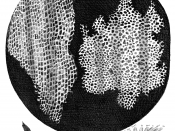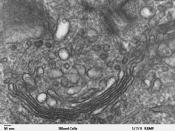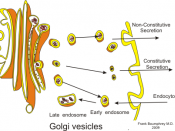Meredith Penland
Standard B-2
Lesson plan for B-2.1 and B-2.2
Cell Structure and Function
Standard B-2.1: Recall the three major tenets of cell theory
Standard B-2.2 : Summarize the structures and functions of organelles found in a eukaryotic cell (including nucleus, mitochondria, chloroplasts, lysosomes, vacuoles, ribososmes, endoplasmic reticulum [ER], Golgi apparatus, cilia, flagella, cell membrane, nuclear membrane, cell wall, cytoplasm).
Performance objectives:
1. Students will be reminded and be expected to know the content of the cell theory
2. Students will understand the difference between plant and animal cells and which organelles are present in which type of cell.
3. Students will create a memorable way to think of each organelle in the analogy activity.
4. Students will learn the organelles of the cell, what their role is within the cell, and how they function within the cell. Students will express their knowledge by a paired research project.
5. Students will be able to explain how the different organelles in the cell are connected. Students will do this by applying information gathered in the research activity to the Journey into the Cell activity.
Concept Introduction:
Power point review of cell theory, the history of cell theory, and the scientists that discovered the cell and those who are credited with the cell theory.
Involve students by:
~Have students recall what unicellular and multi-cellular organisms are and give examples of each kind.
~Ask students to name the major cell structures of both of these organismsâ¦should be reviewed from seventh grade.
~Ask them what the difference between plant and animal cells is in reference to organelles.
Show class the interactive web site CELLS alive! to demonstrate the difference between plant an animal cells. Allow them to lead you through picking which organelles they believe belong in the animal and plant cell. Website...


